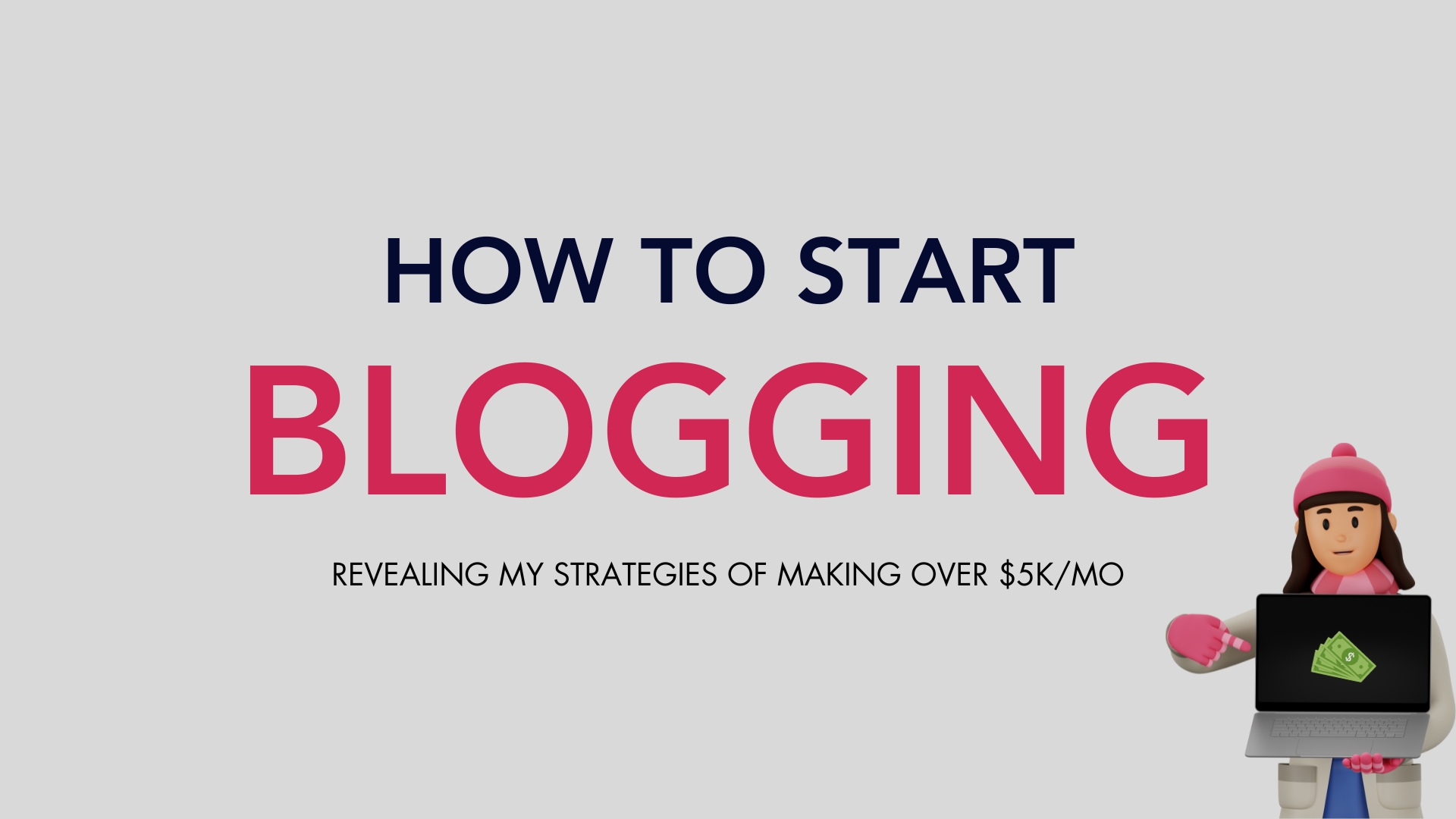Starting a blog can be a great way to express yourself, share your passions, and earn a consistent reward for your blogging efforts.
But if you’ve never blogged before, it can be hard to know where to start. In this article, I’ll share some tips and advice on how to start blogging, from choosing a topic to promoting your blog.
At this time, I own multiple blogs, and the main one generates over $5,000 every single month. This means that one website can fully cover my living expenses.
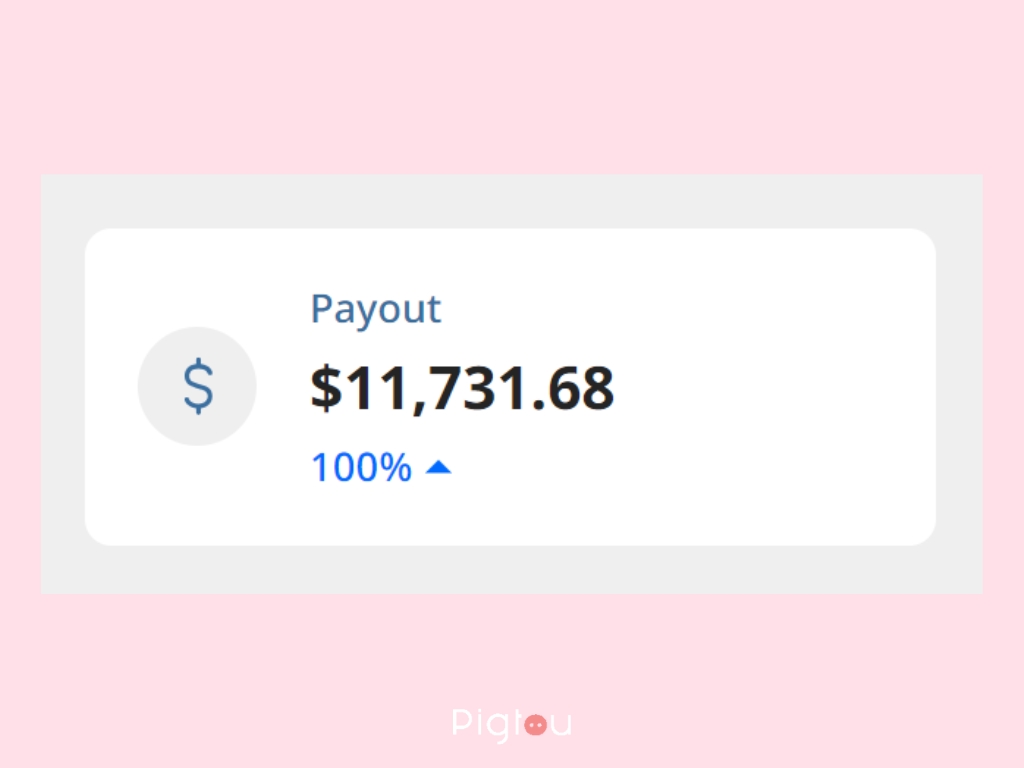
Along with running a profitable blog, you gain valuable SEO and marketing skills that can be converted into services and generate more cash.
This article contains all the actionable information the beginner blogger needs: from choosing the name and setting up the website to doing keyword research and writing the content.
I also reveal my strategies on how to promote the content, get traffic and monetize it as soon as possible.
By the end of reading this article, you’ll have a clear understanding of how blogging works and earns real money, along with step-by-step tips to make this happen.
The Blogging Potential
The potential for success in the blogosphere is vast, with bloggers harnessing the power of their unique voices to reach diverse audiences and build loyal communities.
One of the primary achievements of blogging lies in its ability to establish authority and influence within a particular niche. Thoughtfully crafted content can position bloggers as experts in their field, leading to increased credibility and trust among their audience.
This influence, in turn, can translate into numerous opportunities such as collaborations, partnerships, and even the chance to become a recognized industry leader, earning you a fortune.
As an example, this blog earns me over $5,000 every single month, with the potential to increase my earnings in upcoming months if I continue working on new content and its promotion.
I can also sell my blog for 30x multiple of average monthly revenue, meaning I can get around $150,000 if I decide to sell it.
My blog is still considered pretty small. There are blogs that earn way more.
One of my friends has recently sold his blog for $895,000. At its peak, the blog was earning $40,000 a month from display ads and affiliate commissions. The blog was built in under 2 years!
This is proof that blogging cannot only be a hobby but also become a money-printing machine that can be sold as a valuable asset.
The Blogging Myths
Before we jump to the actionable steps of setting up your blog, I’d like to discuss the most common blogging myths so you have a better understanding of what to expect and what can be neglected.
1. You Need to Be a Perfect Writer to Start a Blog:
Many aspiring bloggers hesitate to start because they believe they need to be perfect writers. While good writing is beneficial, perfection is not a realistic standard.
There are many tools like Grammarly that significantly improve your writing style and correct grammar.
As an example, English is my third language, and that’s enough to run a profitable blog.
Authenticity, relatability, and the ability to communicate effectively are often more critical. Blogging is a journey of improvement, and your writing skills can evolve over time with practice and feedback.
2. Blogging is a Get-Rich-Quick Scheme:
Some believe that starting a blog will lead to instant wealth and financial success.
In reality, building a profitable blog takes time, effort, and consistent dedication.
Success in the blogging world is often a gradual process that requires strategic planning, quality content creation, and effective marketing.
While blogging can generate more money than any 9-5 job, I recommend preparing yourself for a long game, especially if you’re just starting out.
Consider blogging as a hobby, and then be amazed at how it can change your life.
3. More Blog Posts Equal More Success:
Quantity does not always equate to success in the blogging world.
While consistently publishing quality content is crucial, a focus on quantity alone can lead to burnout and a decline in content quality.
It’s more important to create valuable, relevant, and engaging posts that resonate with your target audience.
By using tools like Google Analytics, you’ll be able to identify content that gets attention from your audience.
As a result, you’ll be able to create similar content to increase traffic.
4. Blogs are Expensive to Set Up and Run:
To set up a basic blog, you don’t need any technical skills. You don’t need advanced features when starting out. They won’t simply make any difference.
Trust me, I wasted so much time trying to make my blogs perfect. I spotted no difference in the performance of running a complex blog.
You can set up a blog by yourself and run it at a monthly cost of $3-5. Does blogging still sound expensive?
Now let’s create your first blog together!
STEP 1 – Defining Your Niche
As a blogger, it’s important to define your niche before you start creating content. Your niche is the topic or subject area that you will focus on and become an expert in.
I recommend choosing the niche you’re passionate about, have some knowledge of or at least are interested in researching it.
You’ll have to spend hours researching the topics of the niche, so if you choose a niche you don’t like, you’ll simply give up without reaching your goals.
As an idea of researching a niche for your blog, you can search communities on Reddit. Choose a pretty broad niche; otherwise, it may not be worth your time and effort.
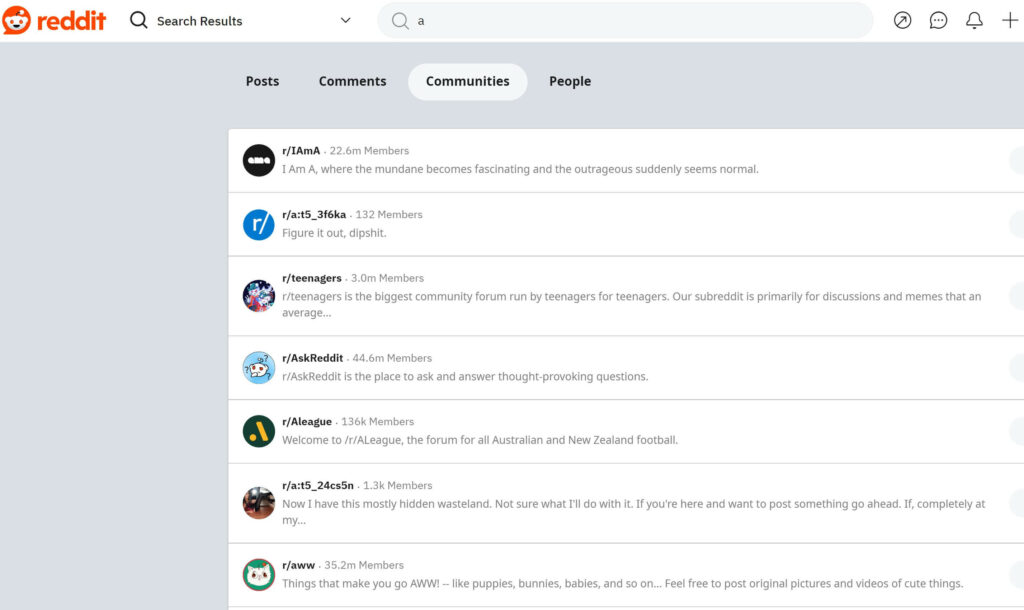
Defining your niche is an important step in starting a successful blog. By researching your audience and evaluating market demand, you can create content that resonates with your readers and sets you apart from the competition.
STEP 2 – Choosing a Domain Name
Your domain name is the web address where your blog will be located. It is important to choose a domain name that is easy to remember, relevant to your blog’s topic, and available. Here are some tips for selecting a domain name:
- Keep it short and simple
- Make it brandable
- Make it easy to spell and pronounce
- Avoid using numbers or hyphens
- Check for availability on domain name registration sites like GoDaddy or Namecheap
Once you have selected a domain name, you will need to register it (explained in step 4). This typically involves paying an annual fee to a domain name registrar, usually around $10-15 a year.
STEP 3 – Choosing a Blogging Platform
When starting a blog, one of the most important decisions you’ll make is choosing the right platform. Your platform will determine the look and functionality of your blog, as well as how easy it is to use and maintain.
There are many blogging platforms available, each with its own strengths and weaknesses. Some popular options include WordPress, Blogger, and Tumblr.
- WordPress is the most popular platform, offering a wide range of customization options and plugins.
- Blogger is a good option for beginners, offering a simple interface and easy setup.
- Tumblr is a microblogging platform ideal for short-form content and visual media.
To keep this part short, just choose WordPress. It’s a free and pretty simple content management system (CMS).
Once you learn how to use the platform, you can run basically any website on it. And it’s much easier to sell WordPress websites.
STEP 4 – Setting Up a Website
Now it’s time to build your website. To do this, you need a domain and hosting. When starting out, I recommend getting the cheapest hosting option.
Bluehost worked pretty well for me. Also, they will preinstall WordPress for you, and you won’t need to do it by yourself.
Register a domain with Bluehost ($10-15 a year), buy a hosting plan with preinstalled WordPress ($3-5 a month), and you’ll be good to go.
Once your blog starts getting over 25,000 monthly visits, I recommend migrating your site to stronger hosting.
Pigtou’s website is on Cloudways DigitalOcean hosting, which costs around $50 a month. I also host some of my other websites on the same server at no additional cost.
STEP 5 – Getting a WordPress Theme
Now you have a WordPress website with a connected domain name, but it’s on a standard WordPress theme that looks very basic and has limited functionality.
Getting a WordPress theme for your blog or website is a crucial step in establishing your online presence. WordPress offers a wide range of themes, both free and premium, that cater to various niches and design preferences.
If you have a budget, get a GeneratePress theme. We use a GeneratePress theme for this website. I got a lifetime subscription for $250 and can use the theme for up to 500 websites.
GeneratePress staff offers great technical support on their forum, and the theme is super fast.
Trust me, it’s a great investment. Once your blog grows, you’ll want to move it to a premium theme like GeneratePress, so if you can, get it now.
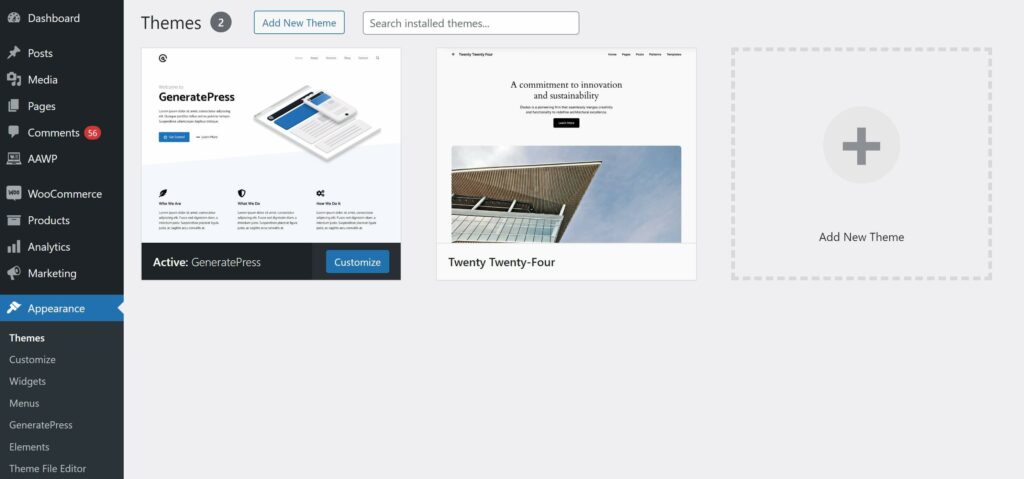
If not, choose a free theme you like from the WordPress library.
Then you can customize it to look appealing.
Here are some blog design basics to keep in mind:
- Use a clean and simple layout
- Choose a color scheme that is easy on the eyes
- Use readable fonts and font sizes
- Include images to break up text and make your blog more visually appealing
All these can be revised in Appearance > Customize.
STEP 6 – Creating Quality Content
When it comes to blogging, creating quality content is key. Not only does it keep your readers engaged, but it also helps to establish your blog as a reliable source of information.
To be honest, every second website is filled with generic AI-generated content that provides zero value to readers. It’s pretty easy to stand out if you create original human-written content.
Become a niche expert, write helpful content and your blog will explode if visitors really like it.
Here are some activities you need to master in order to maximize rewards for your efforts:
STEP 6.1 – Researching Keywords
One of the best ways to optimize your content is by incorporating keywords. These are the words and phrases that people are searching for online.
By including them in your blog posts, you can increase your chances of ranking higher in search engine results pages (SERPs).
Every single article you write should target a specific keyword. This means you should only write about topics people really search for; otherwise, you might end up wasting your time.
The most effective way to find keywords is by using the Google autosuggest feature. When you start typing something on Google, related phrases are displayed. Those are keywords that are currently popular on Google.
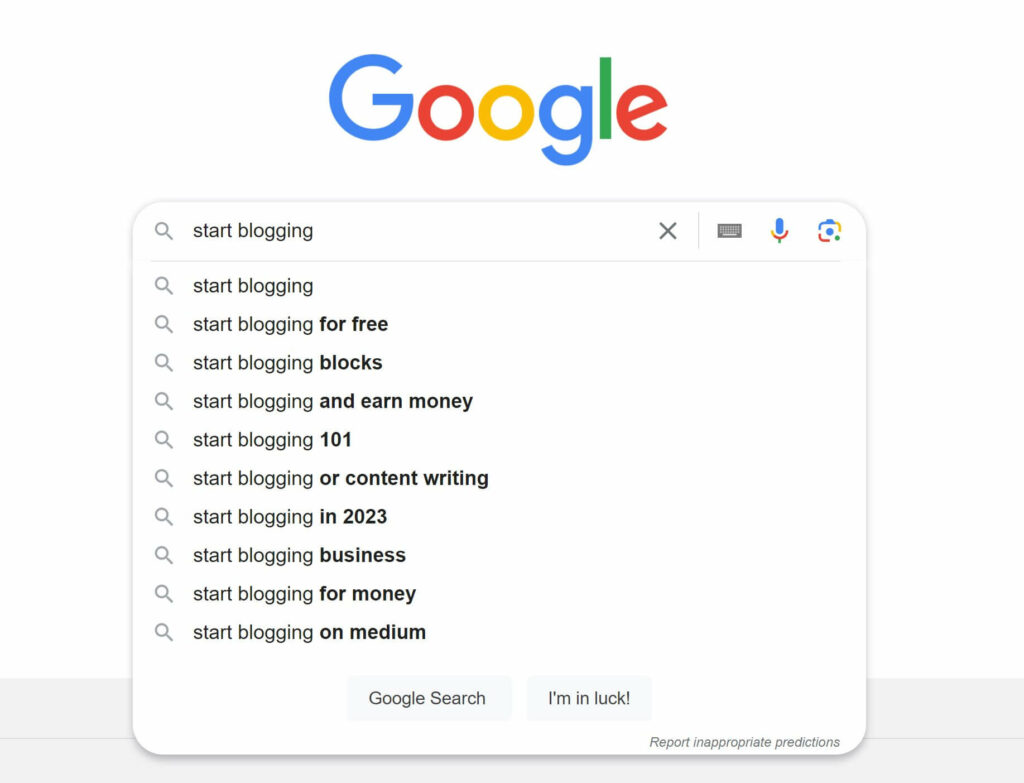
To check monthly search volumes, you can sign up for Google Keyword Planner. You’ll be able to import your keyword and see search volume ranges.
When starting out, I recommend targeting smaller keywords with volume ranges of 10-100. As your blog grows, you’ll be able to rank competitive high-volume keywords.
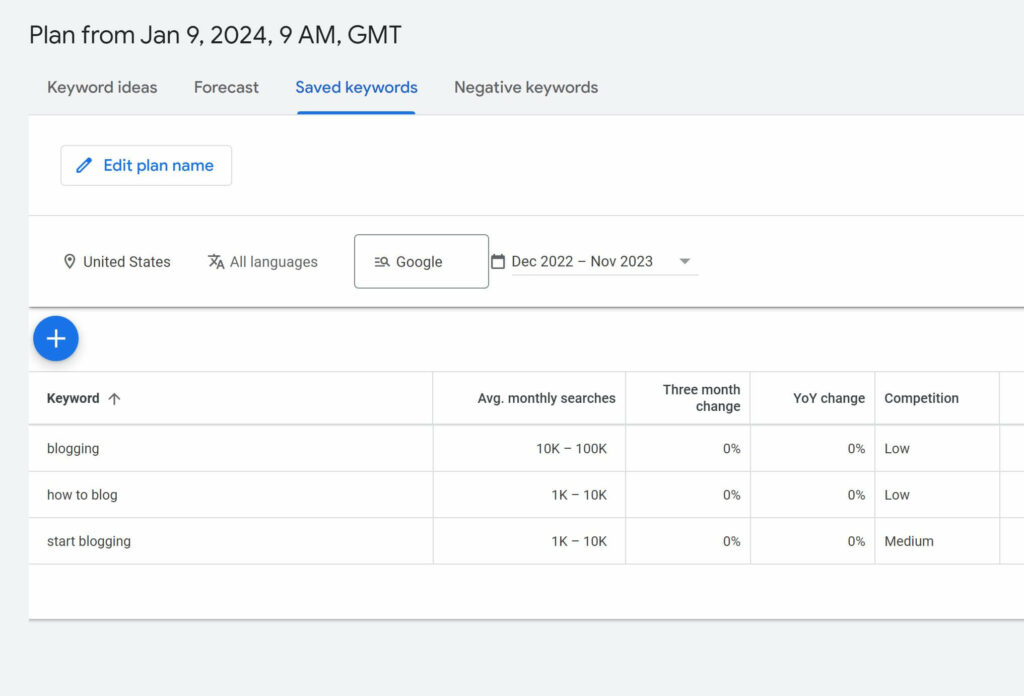
If you decide to rank your content on Pinterest instead of Google or other search engines, you can use the same keyword research technique.
Find related keywords on the Pinterest autosuggested list, sign up for Pinterest ads account and check search volumes there.
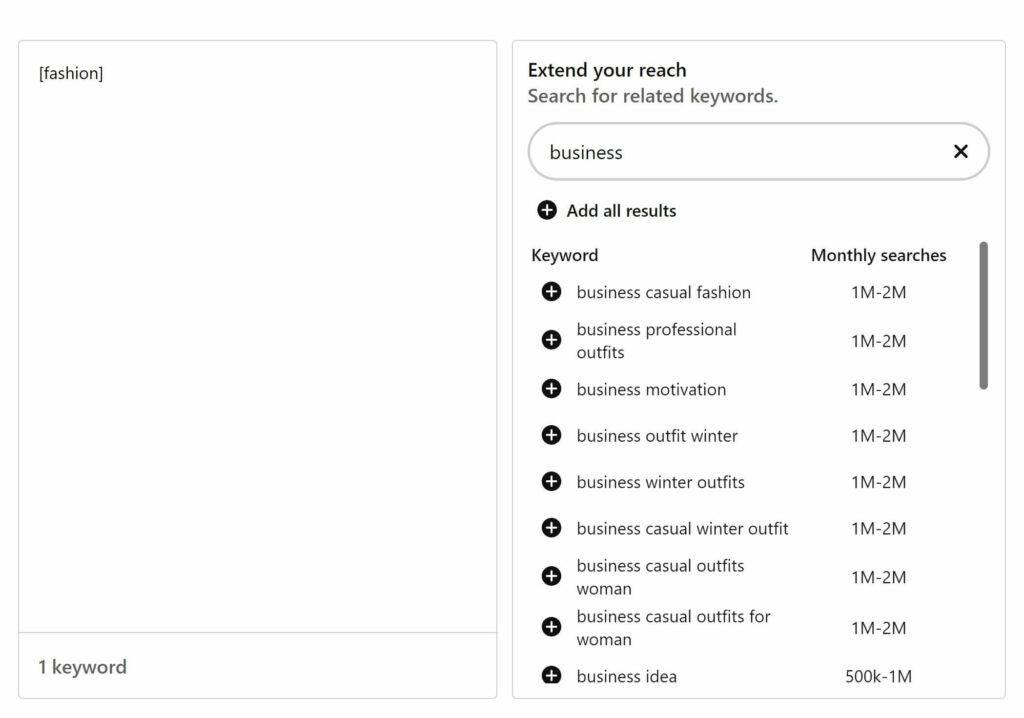
STEP 6.2 – Writing content
Quality content writing and research are integral components of successful online communication.
The most important part is the research. If you simply google your targeted keyword and rewrite a few articles that already rank there, this won’t likely work.
The same goes with Artificial Intelligence tools that usually write really generic articles.
Instead, you should add your unique perspective and research what people are really worried about.
Quality content is relevant to the target audience. It addresses their needs, interests, and concerns.
Providing valuable information that solves problems or entertains the audience enhances the overall quality.
Of course, not using AI writing tools completely is a mistake. Nowadays, the majority of blogs use them to increase productivity and reduce content creation costs.
I recommend using KoalaWriter for creating outlines and preparing raw articles, and Grammarly for enhancing your writing.
Both tools are pretty cheap and will definitely help you to craft perfect articles for your blog.
STEP 6.3 – Creating Visuals
Creating visuals for blogs is a crucial aspect of enhancing the overall appeal and effectiveness of your content.
Visual elements not only make your blog more visually appealing but also play a significant role in conveying information, capturing attention, and improving user engagement.
Canva is a popular online design tool that simplifies the process of creating stunning visuals, even for those without extensive graphic design experience.
My team and I use Canva every single day; all visuals on this website were created with Canva.
I recommend adding at least 2-3 visuals per article so your blog visitors won’t get bored, will spend more time on pages and will increase your earnings.
Canva is also great for creating visually appealing pins if you decide to promote your content on Pinterest.

Give it a try!
STEP 6.4 – Analysing Performance and Scaling Content Production
Once you set up your site, I recommend implementing Google Analytics straight away.
Integrating Google Analytics with your WordPress blog is a valuable step to gathering insights into your website’s performance, user behavior, and audience demographics.
You can easily implement GA script with the Monsterinsights free plugin, which will slightly slow down your site, or with the Perfmatters plugin, which optimizes analytical scripts and makes your blog lightning fast.
I use the Perfmatters option. It costs around $30 a year but makes my website super fast and allows it to pass Google’s Core Web Vitals test.
When starting out, you may decide to minimize expenses, but as your blog grows, you’ll definitely want to add some improvements.
Just remember, the GeneratePress theme + Perfmatters plugin will solve all speed optimization issues.
Once you installed Google Analytics, you’ll be able to track what content attracts the majority of blog visitors.
Check the data once or twice a month and create similar content to the one that already works for you.
Remember, data is the king; utilize it to your benefit.
STEP 7 – Promoting Content
Simply creating high-quality content is not enough; you also need to employ effective promotion strategies to ensure that your target audience discovers and engages with your blog.
Before writing content, decide how you will be promoting it, whether you’re going to create pins on Pinterest, grow your Facebook page and share the content with your audience.
You can share your blog posts across your social media platforms, including Facebook, Twitter, Instagram, LinkedIn, and Pinterest.
Craft compelling captions, use relevant hashtags, and encourage your followers to share your content.
You can also leverage your email subscribers (if you have them) by sending newsletters featuring your latest blog posts.
If you’re just starting out, I recommend focusing on either Pinterest or Facebook; however, your content format must resonate with these social media platforms.
Remember that not all content types and niches work on Pinterest and Facebook. Take a look at what type of content other blogs promote.
You can also use BuzzSumo tools to research content that works best on social media. This will give you some advantage.
Promoting the content on social media has a positive side effect on SEO, pushing your organic rankings up on Google and other search engines.
STEP 8 – Monetizing Your Blog
As a blogger, it’s important to consider how you can monetize your blog. Here are three popular ways to earn money from your blog:
Display Ads
One way to monetize your blog is through advertising revenue. This can be done by placing ads on your blog, either through a program like Google AdSense or by working directly with advertisers.
Keep in mind that too many ads can be overwhelming for your readers, so it’s important to find a balance.
Once your blog starts getting traction, I recommend applying to Google AdSense or Ezoic. Both platforms have low entry requirements, so even tiny blogs usually get accepted.
Ezoic usually pays more than Adsense but has a worse user experience.
When your blog reaches at least 50,000 sessions a month, apply to Mediavine.
This website has Mediavine ads that have little impact on site speed, and RPMs are much higher than on other platforms.
Affiliate Marketing
Affiliate marketing involves promoting other people’s products or services on your blog and earning a commission for any sales made through your unique affiliate link.
This can be a great way to earn money while also providing value to your readers by recommending products or services that you believe in.
Sign up to affiliate platforms like Impact or Conversion Junction and find affiliate offers that best suit your content.
Selling Products or Services
Another way to monetize your blog is by selling your own products or services. This could be anything from an e-book or course to physical products like merchandise or handmade items.
If you have a skill or expertise that you can share with your readers, creating your own product can be a great way to earn money while also providing value.
Remember, monetizing your blog takes time and effort. It’s important to focus on creating quality content and building a loyal readership before attempting to monetize your blog.
Final Word
Exploring the journey of blogging is an exciting endeavor filled with endless possibilities for personal and professional growth.
Blogging can generate you ton of money if you do it right. You’ll be amazed how much it can change your life, and you won’t want to get back to your 9-5 job ever again.
As outlined in this guide, the key lies in finding your unique voice, selecting a niche you are passionate about, delivering valuable content to your audience, and consistently promoting the content.
Remember, success in the blogging world takes time and persistence, so be patient with the process.
Good luck in your blogging journey!

